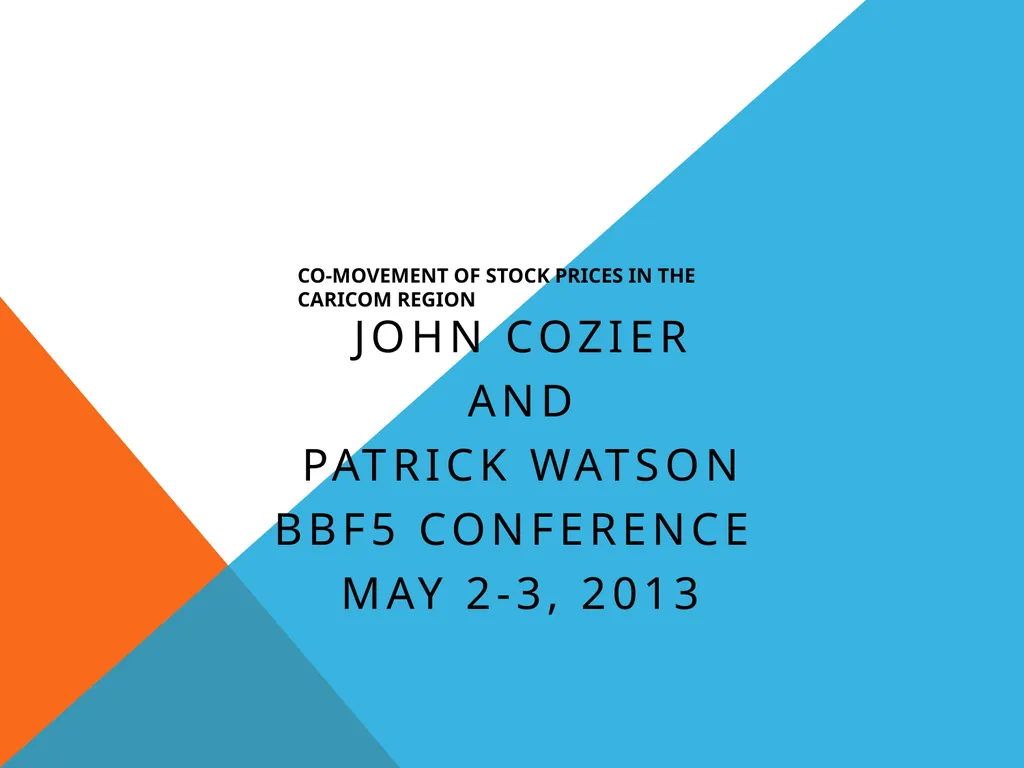
Co-movement of Stock Prices in the CARICOM Region
Author: sherrill-nordquist | Published: 2025-06-27
Description: Co-movement of Stock Prices in the CARICOM Region John Cozier AND PATRICK WATSON Bbf5 confeRence May 2-3, 2013 Outline of Presentation Introduction Methodology and Data Empirical Analysis Preliminary Estimation of GARCH Estimation of Copula
Download Presentation
Download the PPT/PDF: Download
Transcript:
Loading transcript…